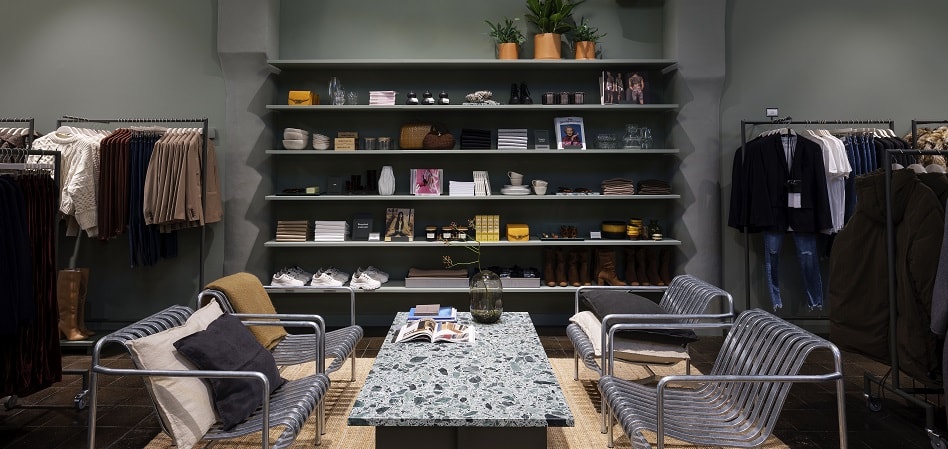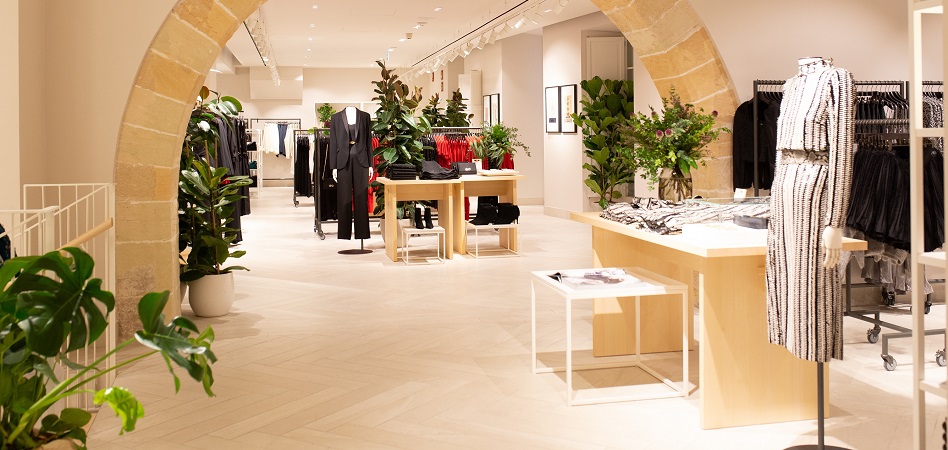H&M tries it all: what if it hits the right key?
The company has reacted to bad results with more experimentation and more innovation to place itself in a pole position when fashion completes its transformation.

Rent, experience, customization, boutiques, repair, vintage, more online, more retail. The string of tests that H&M has carried out in the last two years reflects the uncertainty of the giant about the future of the sector. After some bad results, the Swedish giant reacted to a bunch of experimentation, trying absolutely everything. Number two retailer in the world by revenue is trying it all: what if in the end it hits the right key?
Fashion business is immersed in one of the greatest transformations in its history. No one knows for sure if the future will be truly omnichannel, if the flagships will swallow small stores on secondary streets, if rent and secondhand will end purchases as we know them today or if, as Chip Bergh, chief executive officer of Levi’s, stated last week, garment sizes will disappear in ten years.
H&M shares all its pilot tests since its listed in the stock exchange but is probably not the only giant that is experiencing. Inditex, much more discreet when it comes to communicating, only confessed that its transformation was limiting its store network in five years.
“Digitalization is motivating the need to transform faster and faster,” said Karl-Johan Persson in 2017
The Spanish company also shared in 2018 its pilot test with augmented reality in Zara, which was launched in 120 stores, and the openings of pop up stores dedicated only to online shopping in Tokyo, Milan and London.
Gap, immersed in a deeper restructuring than its rivals, launched a new brand in 2018 after more than a decade without changes in its portfolio, Hill City, which intends to address men’s athleisure wear.
When bad results of 2017 arrived, H&M already was immersed in a transformation for years, but, like its rivals, everything accelerated in 2018. “Digitalization is at the heart of our transformation and is motivating the need to transform and think faster and faster,” said Karl-Johan Persson, chief executive officer of H&M, in the 2017 annual results.

And yes, it did. In December of that same year, the company announced the launch of Nyden, its eighth chain, designed only for online channel and with the aim of conquering youngest clients that didn’t identify with any other concept of the group.
It was H&M’s response to analysts, who came to describe the company’s path to digitalization as a “painful journey” but only six months after its launch, the group took a step back and shuttered Nyden.
The new chain would take little to arrive. That same year, H&M launched Afound, an online store which again tested the sale of third-party products (as it has already done once in & Other Stories). The chain opened several stores, although in October this year, H&M decided to cancel the offline expansion. Its web, meanwhile, is only available in the Netherlands and Sweden.
H&M has launched three new chains since 2017: Arket, Afound and Nyden (today closed)
Best luck arrived with Arket, launched in 2017 as a lifestyle concept with own and third-party brands and cafeteria in the stores. In just two years, the chain has opened twenty stores, all in Europe, and operates online in eighteen countries, more than & Other Stories.
At the same time, the company decided to close Cheap Monday, which it acquired in 2008. “Cheap Monday has a traditional multibrand business, which is a model that has faced great challenges due to the change in the industry,” the group stated.

From massive to local
Although chain launches and closures have probably been the most drastic moves, the company has also carried out more transcendent experiments, because they involve a strategic change that goes beyond addressing new channels or types of customers.
After decades of globalization of the fashion industry, in which the giants of the mass market positioned, H&M is betting on taking a turn and addressing personalization and local. The first step was the launch, in May of this year, of a collection based on the searches of the clients of each neighborhood.
The goal of the test, which was carried out in eight stores of the group in Berlin, was to test the production on demand. A few months later, the company gave a new twist to this commitment to the local with the premiere of a radically different store concept that has dominated in recent years.
The company has already carried out several customization tests with two startups
In the middle of flagships, the company opened a 300 square meters store in Mitte district in Berlin that it defined as “hyperlocal”. The store has a radically opposite decoration compared to the large cold spaces of H&M. The store has little clothing offer and many lifestyle items, as well as a space for juices and coffee and a yard. In the following months, the venue will host yoga sessions and a Christmas market.
The Mitte model is being replicated differently in other countries, such as Spain. The commitment to approach their customers in a more personalized way has also reached the group’s collaborative strategy. While continuing to seal global deals with luxury brands (the latter, Giambatista Valli), the company has begun to close other alliances at the local level.
In July, the company first partnered with a Chinese designer, Angela Chen, with whom it launched a collection that was distributed only in some markets, mostly Asian. Last week, the company carried out the same strategy in Latin America, announcing the launch of a collection with Colombian designer Johanna Ortiz.

At the same time H&M has continued to focus on personalization in product development. In April, the group allied with Zyseme startup to develop an app that allows custom clothing to be sold using artificial intelligence.
This year, the company has invested in another startup, Unspun, for a pilot personalization test with Weekday. Unspun technology scans the client’s body and allows to produce garments adapted to their physiognomy.
Repair, reuse, rent
Sustainability has been another of the group’s transformation drivers. H&M has been a pioneer in investigating new materials and close the loop, but in the last two years it has taken it to a new level with the test of new business models such as rental or secondhand.
In 2018, the company opened in its flagship store in Paris a new space called Take Care, in which sales assistants give advice to extend the life of clothing and has sewing machines so that customers can customize and repair their garments. In April 2019, the company also tested secondhand with a pilot test with Sellpy, owned since October by the group.
The next test will arrive in the following weeks, in its stores in Stockholm, where it will premiere a rental service. The store will also have services such as a bar and cosmetic services.

Techie experiments
H&M has also continued to experiment with new technologies throughout its entire value chain. In the last two years, the company has tested blockchain, launched a voice assistant with Google and tested augmented reality.
Also, the company launched a streaming shopping service with Monki and a platform for fashion inquiries. It also renewed its website including, among others, the option to test orders before buying them.
In all its tests, H&M is not inventing anything new; Rent the Runway has reached a market cap of one billion dollars with a rental model, there are thousands of pure players dedicated to millennials and other companies that have tested customization much earlier.
But, unlike others who tried it before, H&M already has the volume and the ability to scale and, if at the end it hits the key, it could achieve what its rival Inditex did more than forty years ago: define the model that will reign the next decade in the sector.


info@themds.com
Validation policy for comments:
MDS does not perform prior verification for the publication of comments. However, to prevent anonymous comments from affecting the rights of third parties without the ability to reply, all comments require a valid email address, which won’t be visible or shared.
Enter your name and email address to be able to comment on this news: once you click on the link you will find within your verification email, your comment will be published.